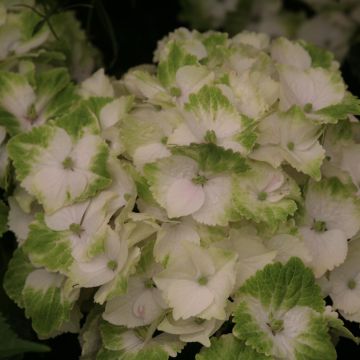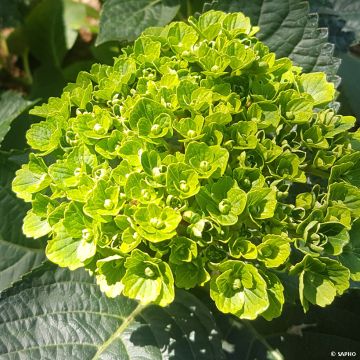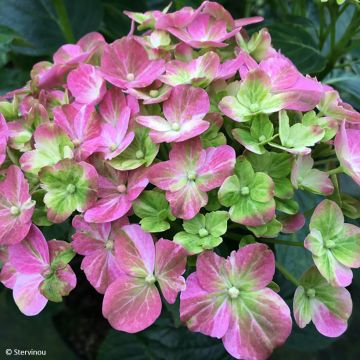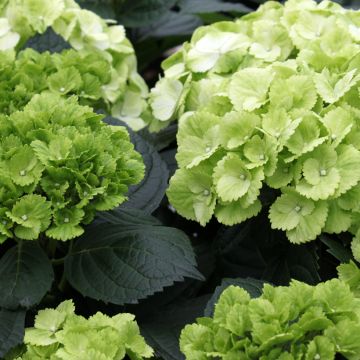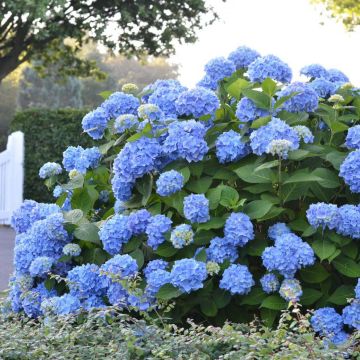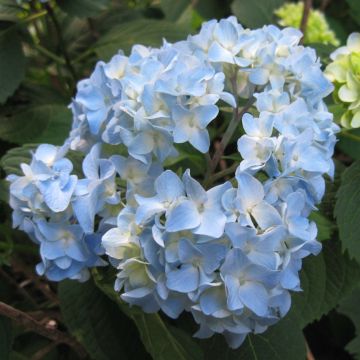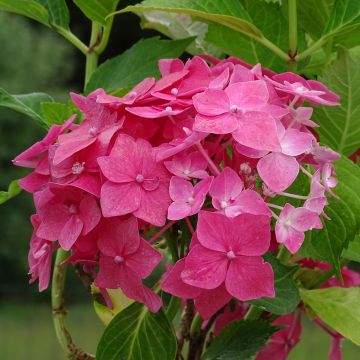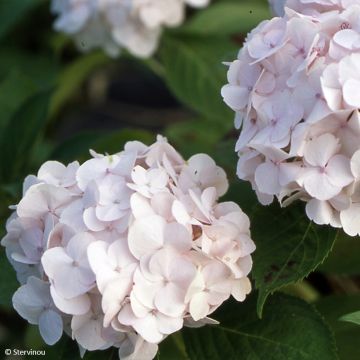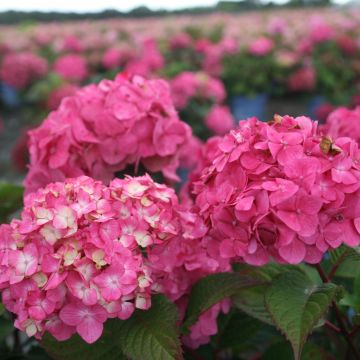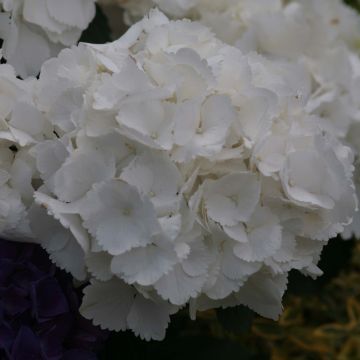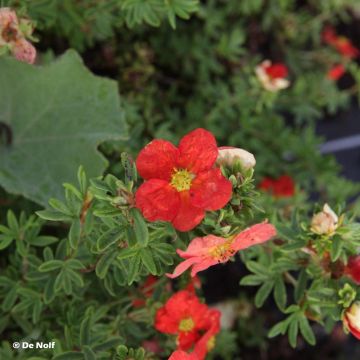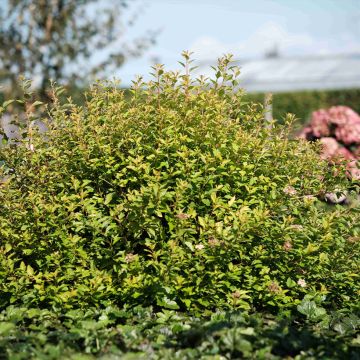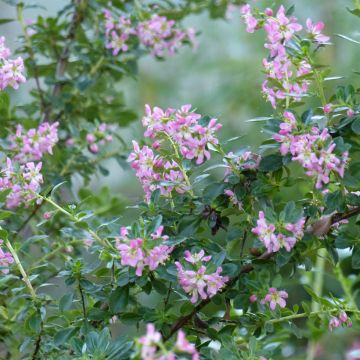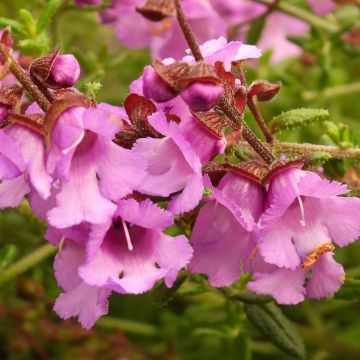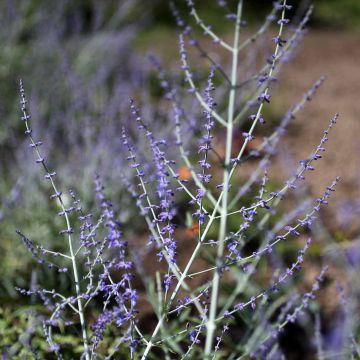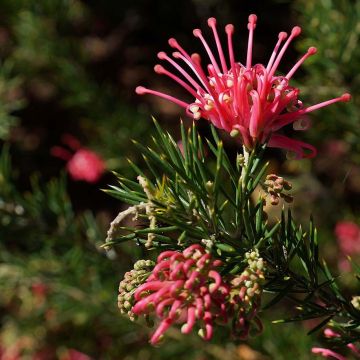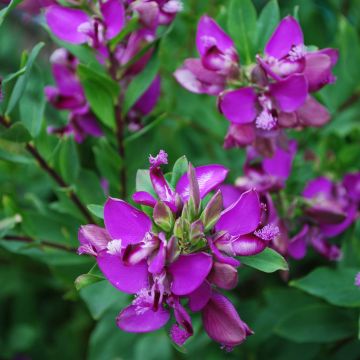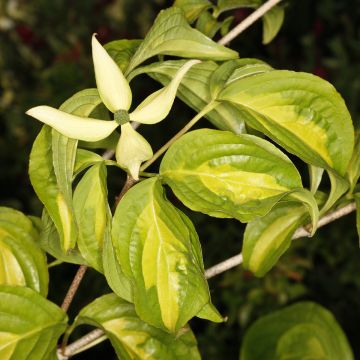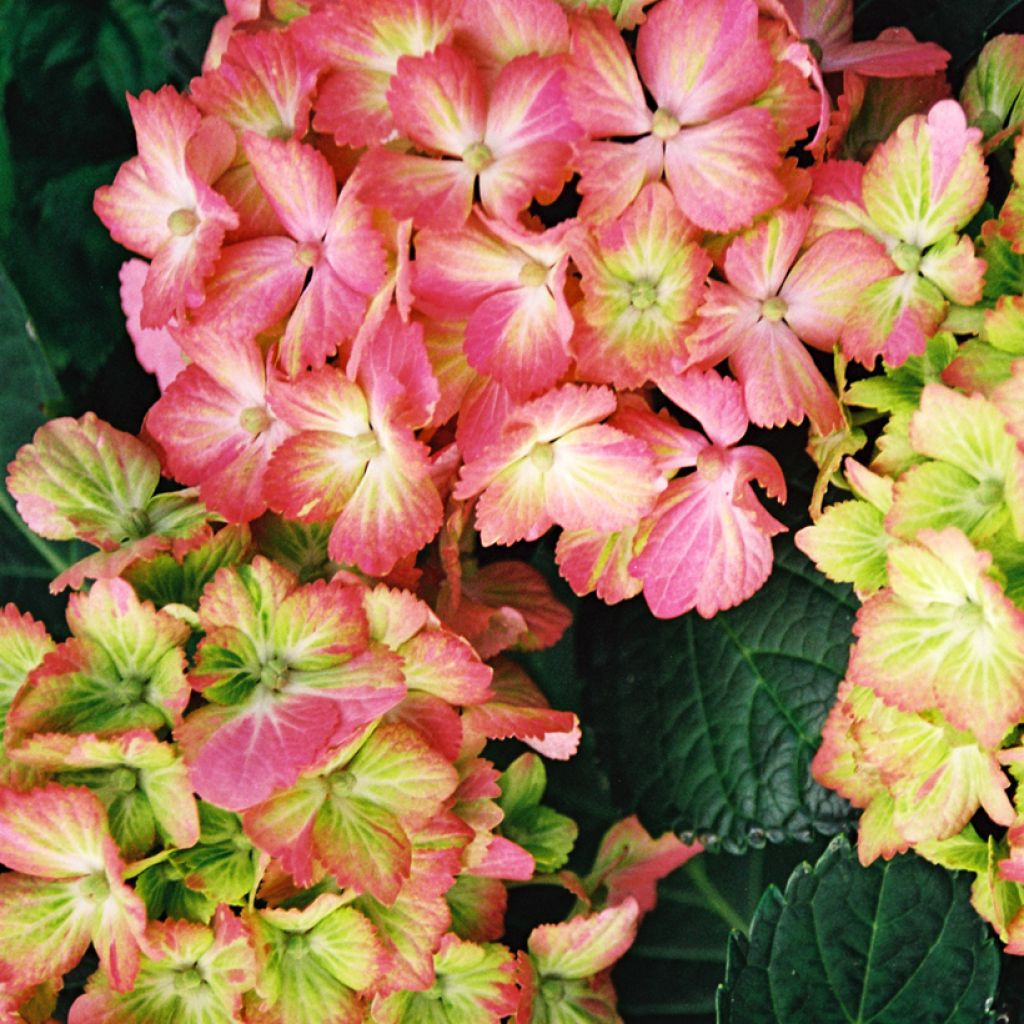

Hydrangea macrophylla Fantasia
Hydrangea macrophylla Fantasia
Hydrangea x macrophylla 'Fantasia' PP21 169
Why not try an alternative variety in stock?
View all →This plant carries a 24 months recovery warranty
More information
We guarantee the quality of our plants for a full growing cycle, and will replace at our expense any plant that fails to recover under normal climatic and planting conditions.
From €5.90 for pickup delivery and €6.90 for home delivery
Express home delivery from €8.90.
Does this plant fit my garden?
Set up your Plantfit profile →
Description
Hydrangea macrophylla 'Fantasia' is an astonishing variety, with a flowering that regularly changes colour throughout the summer. Starting from July, the shrub produces large inflorescences tinted with green that gradually enrich with cream white and pink, before turning completely pink. All these shades coexist on the plant as new flowers emerge, giving this Hydrangea a unique appearance. It will fit perfectly in both contemporary and romantic gardens reminiscent of the Belle Époque.
The Hydrangea genus belongs to the Hydrangeaceae family, which is named after it, and includes a dozen or so genera, some of which are very common, such as Philadelphus (Mock Oranges) or Deutzia. Hydrangeas, of which there are dozens of species, are shrubs, bushes several metres high, or climbing plants, the majority of which are native to East Asia. Most are deciduous, although some are evergreen, such as Hydrangea seemanii. The heritage of Hydrangea macrophylla is uncertain despite its success in gardens, but it seems that modern cultivars of Hydrangeas are descended from the Otaksa variety, cultivated in Japanese gardens.
'Fantasia' is an attractive cultivar with its changing colours. This medium-sized shrub reaches a height of 1.30m to 1.50m at maturity, with a width of 1m to 1.20m. The upright branches, which more or less form a sphere, are adorned with the typical foliage of the species. The oval to elliptical leaves, measuring about 10 to 15 cm long, have toothed edges and prominent veins, and their colour ranges from medium green to dark green depending on the exposure and soil. This dense and dark vegetation forms a superb setting for the flowering, which begins towards the end of June, depending on the year and the region. Large inflorescences measuring 15 to 20 cm in diameter then bloom, composed of dozens of small flowers. These combine hardly visible fertile flowers, grouped in the centre and sterile florets on the periphery, fringed at their tips, which are the ones we admire. In Fantasia, they emerge in greenish tones, gradually lightening to cream white, mixed with pink, often juxtaposed shades, giving this variety its charming "old-fashioned" look. The inflorescences then turn pink, and as the plant blooms again until September, the different stages and colours coexist, giving it a different appearance every week. This dynamic aspect allows the shrub to be planted in a contemporary garden as well. Its dried flowers, kept away from light, will fabulously decorate your interior.
Hydrangeas are robust plants that can live for at least 50 years, and this Fantasia variety manages to withstand trends with its changing flowering that exudes an old-fashioned charm while being very modern. Its compactness allows you to grow it in a container, especially if your soil is limestone, and you can integrate it into a diverse flowerbed if your soil tends to be acidic. Choose a semi-shaded spot and plant Brunnera sibirica at its feet, a superb perennial with beautiful heart-shaped green leaves and delicate blue flowers that bloom in April and May. A few plants of Primula japonica, with their tiered pink blooms in June, will add a touch of distinction while bridging the gap between the flowering of Brunnera and your Hydrangea. And for a festival of colours, plant Acer palmatum 'Metamorphosa', a small Japanese Maple whose foliage constantly varies throughout the season, ranging from pink, white, yellow, red, and purple!
Report an error about the product description
Plant habit
Flowering
Foliage
Botanical data
Hydrangea
x macrophylla
'Fantasia' PP21 169
Hydrangeaceae
Cultivar or hybrid
Other Hydrangea Macrophylla
Planting and care
Plant Hydrangea macrophylla 'Fantasia' in spring or early autumn, preferably in a slightly shaded location, such as against an east-facing wall or even north-facing. Protect it from cold and drying winds and intense sunlight. It does not require acidic soil but appreciates deep, moist, well-drained soil that is sufficiently fertile, possibly enriched with a good base fertiliser before planting. If the soil is dry at the base of the wall, place the root ball at least 30-40 cm away and incorporate a quantity of well-decomposed compost to better retain moisture in the soil. It is very hardy so it can be planted in cold regions without any concerns. As for pruning, remove faded flowers on the first bud or the pair of buds directly below. Cut back a quarter or third of the oldest stems to the base when the plant is mature, to promote the formation of new shoots, every year during March and April.
Planting period
Intended location
Care
This item has not been reviewed yet - be the first to leave a review about it.
Summer-flowering shrubs
Haven't found what you were looking for?
Hardiness is the lowest winter temperature a plant can endure without suffering serious damage or even dying. However, hardiness is affected by location (a sheltered area, such as a patio), protection (winter cover) and soil type (hardiness is improved by well-drained soil).

Photo Sharing Terms & Conditions
In order to encourage gardeners to interact and share their experiences, Promesse de fleurs offers various media enabling content to be uploaded onto its Site - in particular via the ‘Photo sharing’ module.
The User agrees to refrain from:
- Posting any content that is illegal, prejudicial, insulting, racist, inciteful to hatred, revisionist, contrary to public decency, that infringes on privacy or on the privacy rights of third parties, in particular the publicity rights of persons and goods, intellectual property rights, or the right to privacy.
- Submitting content on behalf of a third party;
- Impersonate the identity of a third party and/or publish any personal information about a third party;
In general, the User undertakes to refrain from any unethical behaviour.
All Content (in particular text, comments, files, images, photos, videos, creative works, etc.), which may be subject to property or intellectual property rights, image or other private rights, shall remain the property of the User, subject to the limited rights granted by the terms of the licence granted by Promesse de fleurs as stated below. Users are at liberty to publish or not to publish such Content on the Site, notably via the ‘Photo Sharing’ facility, and accept that this Content shall be made public and freely accessible, notably on the Internet.
Users further acknowledge, undertake to have ,and guarantee that they hold all necessary rights and permissions to publish such material on the Site, in particular with regard to the legislation in force pertaining to any privacy, property, intellectual property, image, or contractual rights, or rights of any other nature. By publishing such Content on the Site, Users acknowledge accepting full liability as publishers of the Content within the meaning of the law, and grant Promesse de fleurs, free of charge, an inclusive, worldwide licence for the said Content for the entire duration of its publication, including all reproduction, representation, up/downloading, displaying, performing, transmission, and storage rights.
Users also grant permission for their name to be linked to the Content and accept that this link may not always be made available.
By engaging in posting material, Users consent to their Content becoming automatically accessible on the Internet, in particular on other sites and/or blogs and/or web pages of the Promesse de fleurs site, including in particular social pages and the Promesse de fleurs catalogue.
Users may secure the removal of entrusted content free of charge by issuing a simple request via our contact form.
The flowering period indicated on our website applies to countries and regions located in USDA zone 8 (France, the United Kingdom, Ireland, the Netherlands, etc.)
It will vary according to where you live:
- In zones 9 to 10 (Italy, Spain, Greece, etc.), flowering will occur about 2 to 4 weeks earlier.
- In zones 6 to 7 (Germany, Poland, Slovenia, and lower mountainous regions), flowering will be delayed by 2 to 3 weeks.
- In zone 5 (Central Europe, Scandinavia), blooming will be delayed by 3 to 5 weeks.
In temperate climates, pruning of spring-flowering shrubs (forsythia, spireas, etc.) should be done just after flowering.
Pruning of summer-flowering shrubs (Indian Lilac, Perovskia, etc.) can be done in winter or spring.
In cold regions as well as with frost-sensitive plants, avoid pruning too early when severe frosts may still occur.
The planting period indicated on our website applies to countries and regions located in USDA zone 8 (France, United Kingdom, Ireland, Netherlands).
It will vary according to where you live:
- In Mediterranean zones (Marseille, Madrid, Milan, etc.), autumn and winter are the best planting periods.
- In continental zones (Strasbourg, Munich, Vienna, etc.), delay planting by 2 to 3 weeks in spring and bring it forward by 2 to 4 weeks in autumn.
- In mountainous regions (the Alps, Pyrenees, Carpathians, etc.), it is best to plant in late spring (May-June) or late summer (August-September).
The harvesting period indicated on our website applies to countries and regions in USDA zone 8 (France, England, Ireland, the Netherlands).
In colder areas (Scandinavia, Poland, Austria...) fruit and vegetable harvests are likely to be delayed by 3-4 weeks.
In warmer areas (Italy, Spain, Greece, etc.), harvesting will probably take place earlier, depending on weather conditions.
The sowing periods indicated on our website apply to countries and regions within USDA Zone 8 (France, UK, Ireland, Netherlands).
In colder areas (Scandinavia, Poland, Austria...), delay any outdoor sowing by 3-4 weeks, or sow under glass.
In warmer climes (Italy, Spain, Greece, etc.), bring outdoor sowing forward by a few weeks.


































